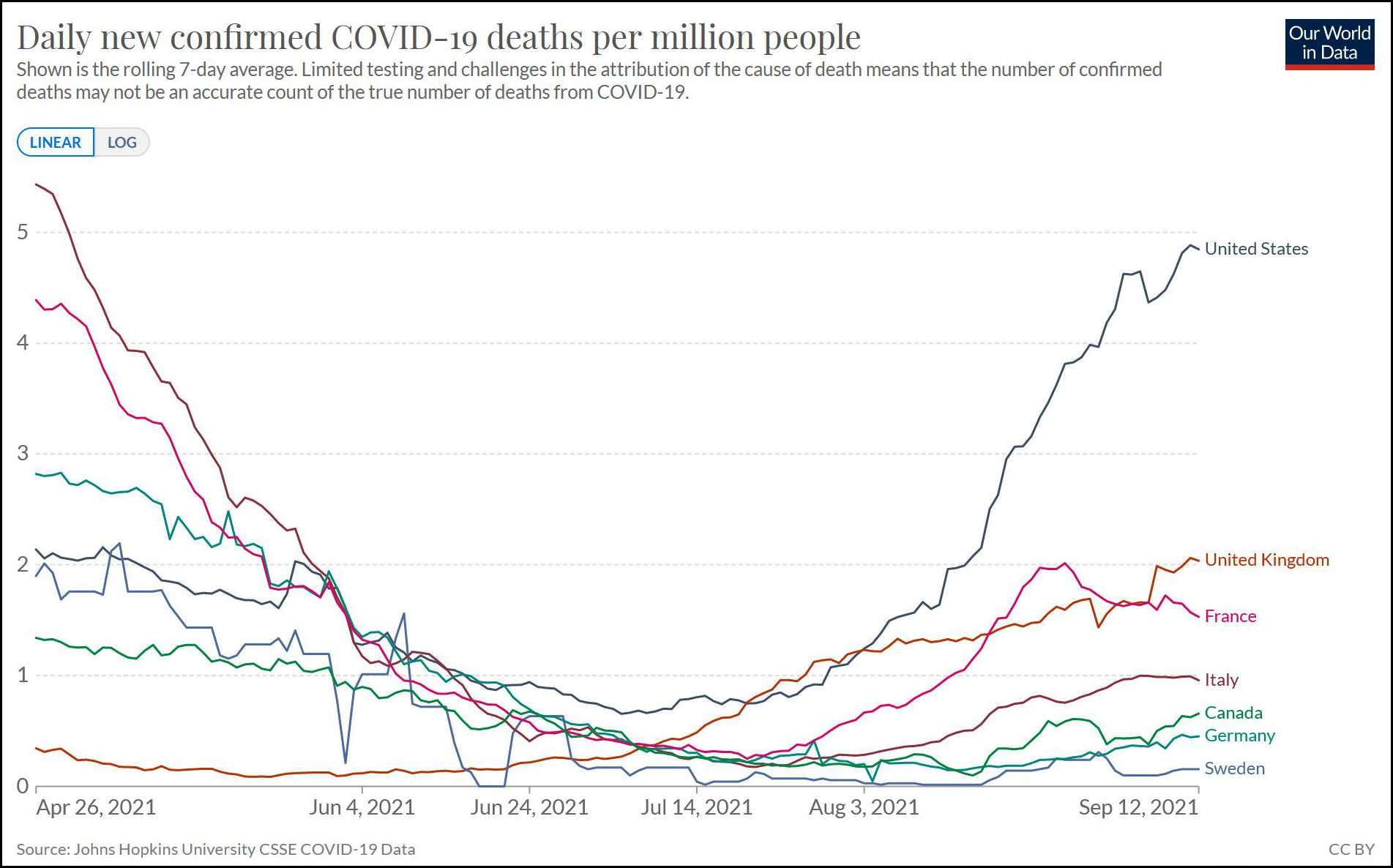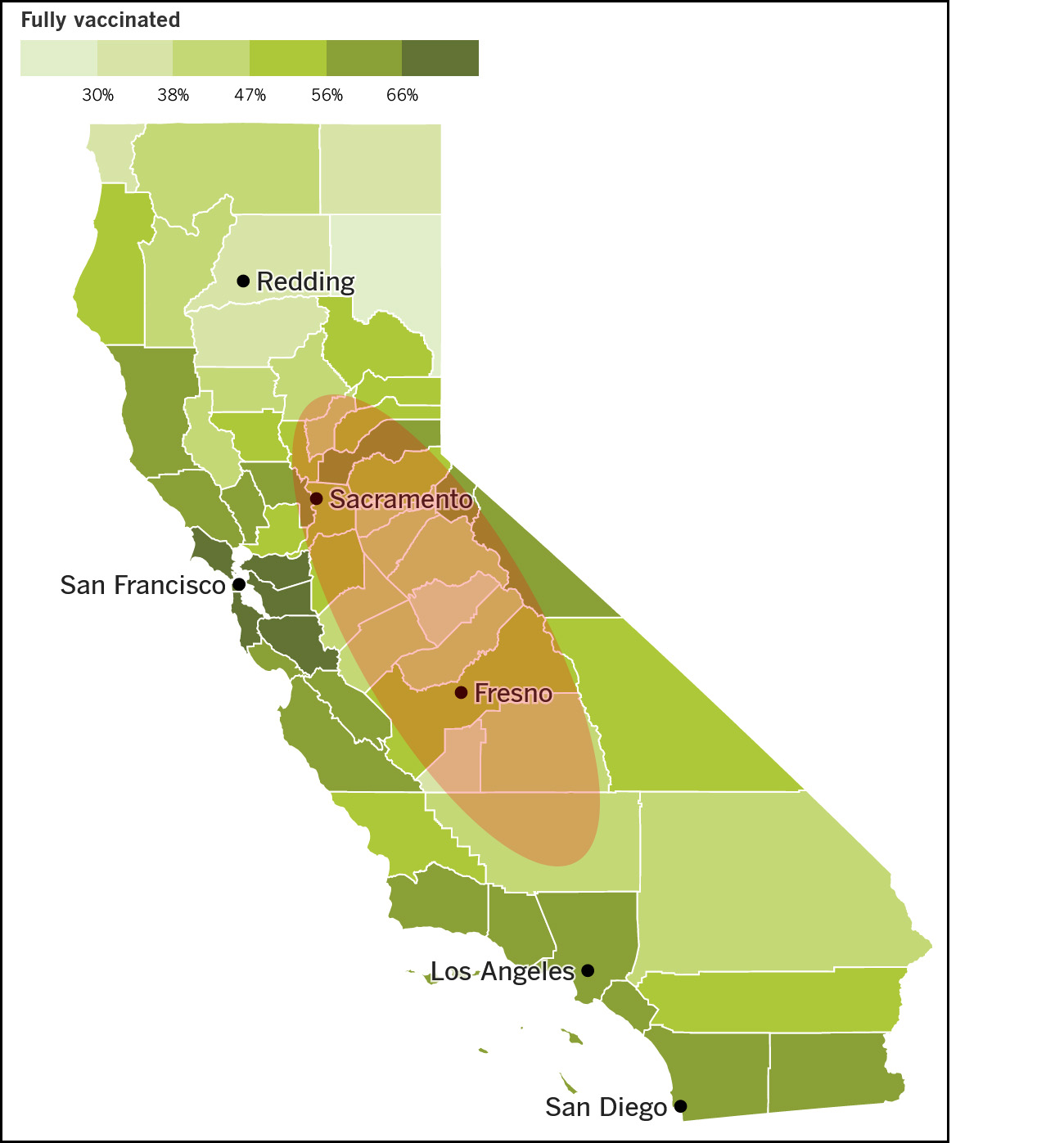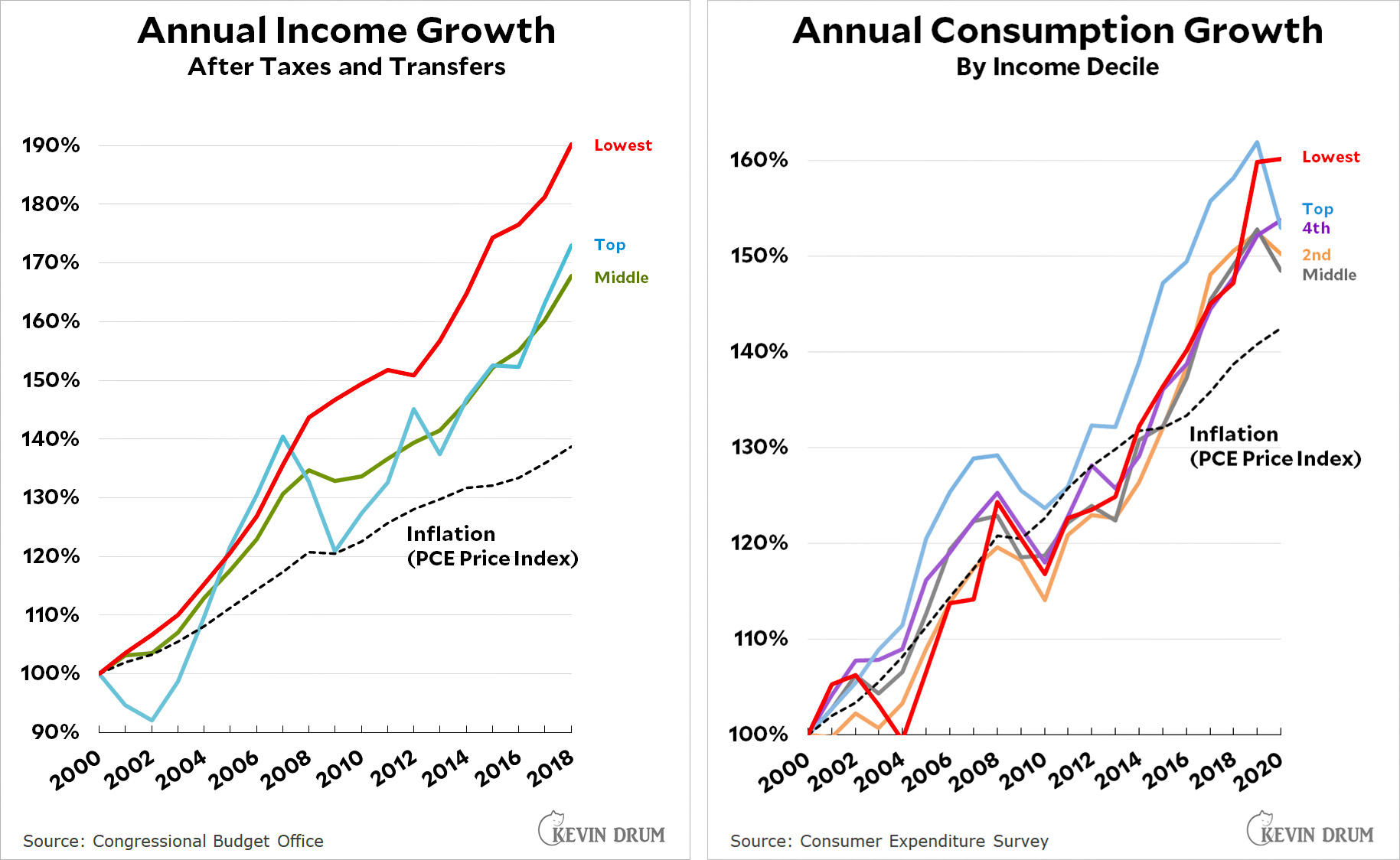I'm a little late to this, but George W. Bush gave a speech on 9/11:
George W Bush on 9/11: "We have seen growing evidence that the dangers to our country can come not only across borders but from violence that gathers within ... they are children of the same foul spirit and it is our continuing duty to confront them." pic.twitter.com/TGvHoCbjJV
— Aaron Rupar (@atrupar) September 11, 2021
This is all very fine, and I'm glad to see Bush denounce the violent Trumpist wing of the Republican Party even if he didn't actually name them. Unfortunately, this is nowhere near enough.
The actual Trumpistas themselves I can almost feel some empathy for. They are largely old, poorly educated, and feel like they have genuine grievances. They are wide open to being conned, and Trump, Fox News, and the rest of the right-wing media machine is happy oblige them. To a large extent, these folks oppose vaccines and believe the election was stolen because that's what they're being told—over and over and over.
The people I have a real problem with are the non-insane Republicans. These are the ones who don't like Trump and understand that he's dangerous. But they aren't willing to do the only thing that might rid the party of Trumpism: vote for Democrats.
Not forever. Just temporarily until their party gets the message that it needs to purge Trump and his influence if they want to win elections.
I don't expect anyone to become a liberal. Or to like Democrats. I just want them to hold their noses and vote D for a little while on the grounds that a few years of liberal governance is better than allowing the Republican Party to permanently become a party of Trumpism. The old notion that Trumpism is bad but fundamentally harmless was never really justified, but after "Stop the Steal" and January 6 and now the season of vaccine madness, it should be obvious that it's not harmless at all. It's dangerous and will likely get more dangerous over time.
But there's no way to clean up the Republican Party by words alone. As long as they're winning elections, they'll keep doing what they're doing. So vote D. Just for a little while.

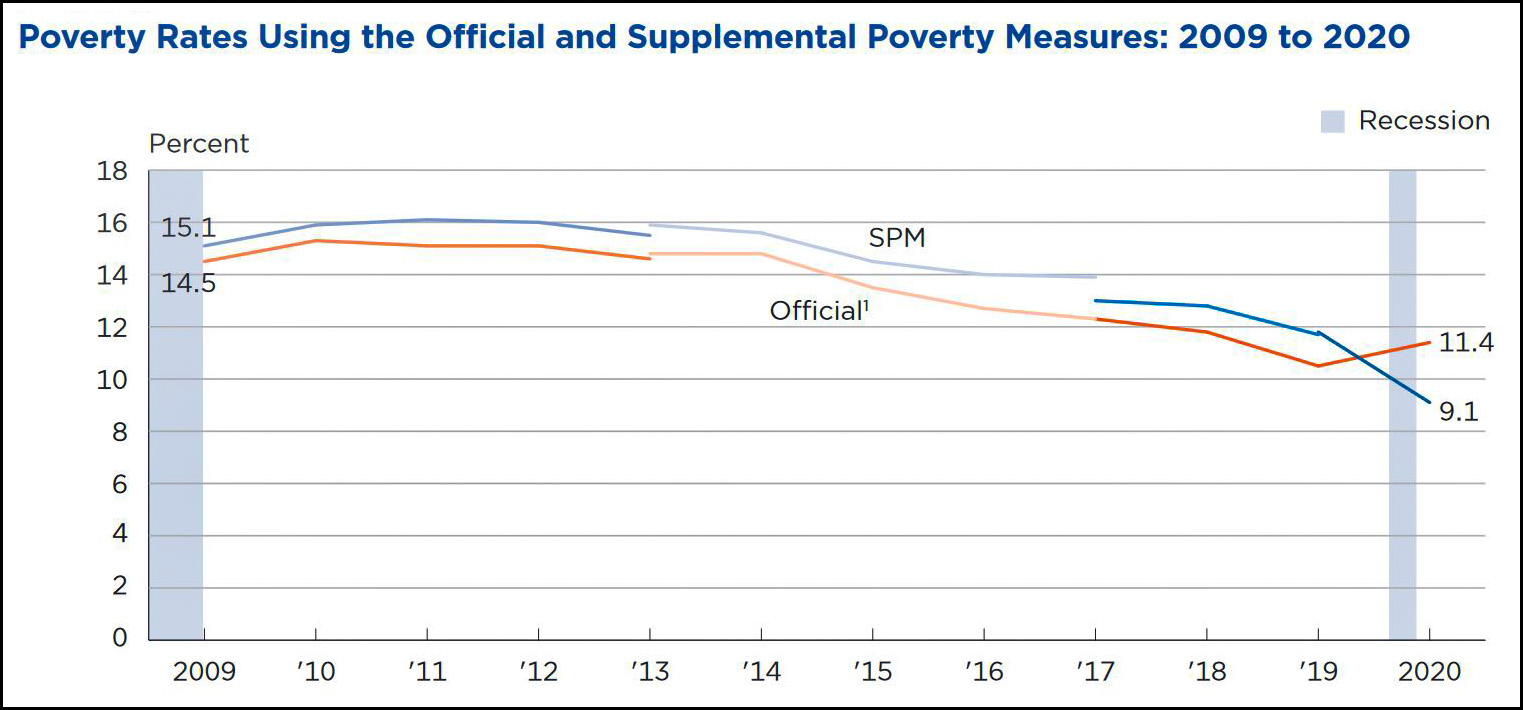

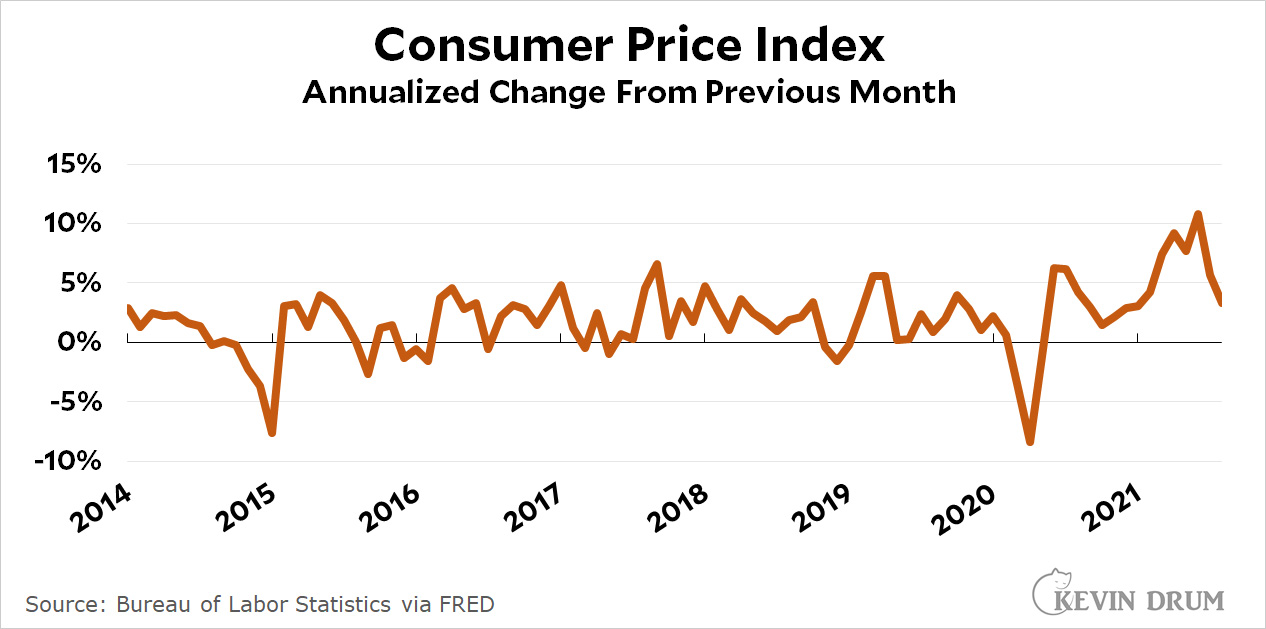
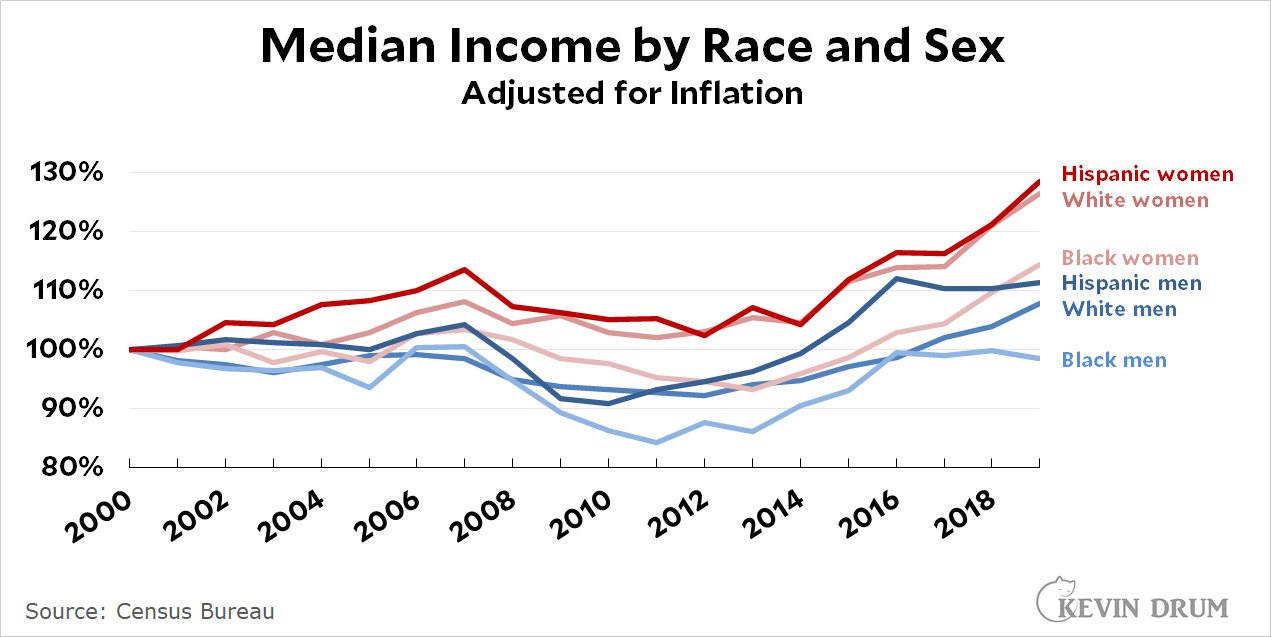
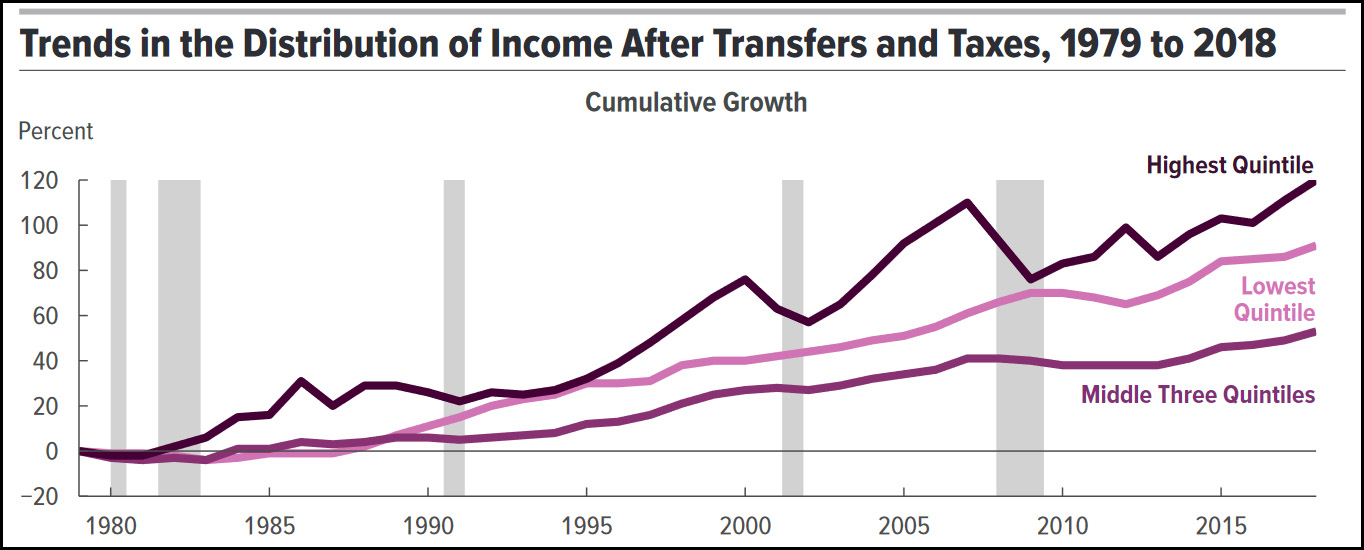
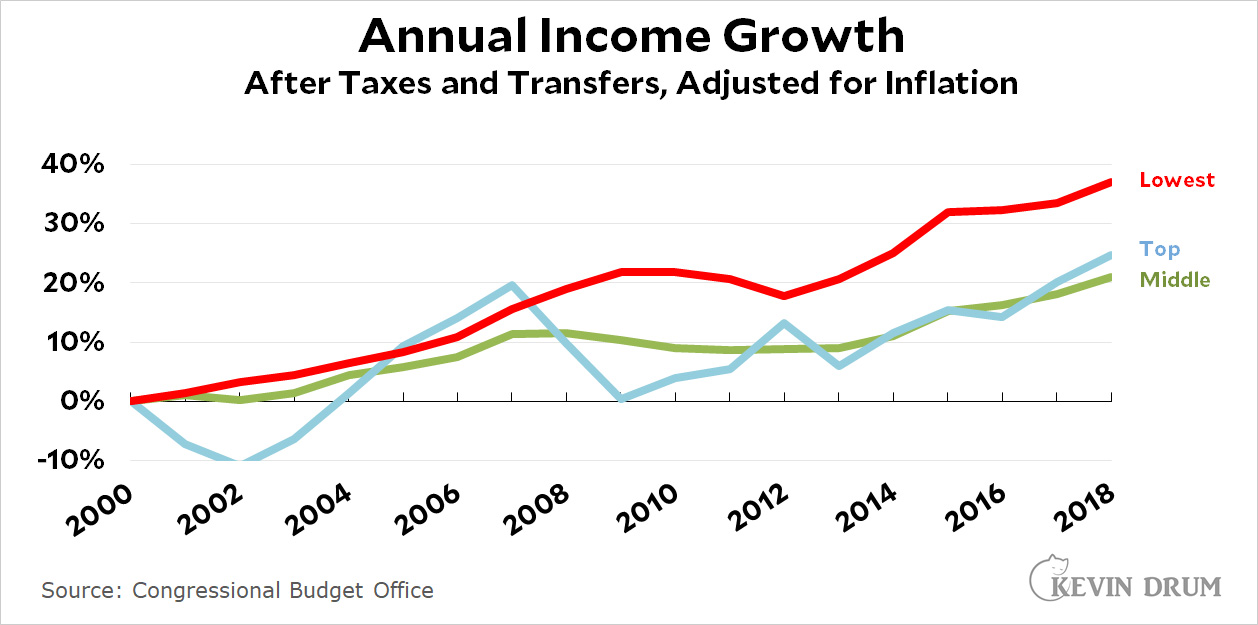
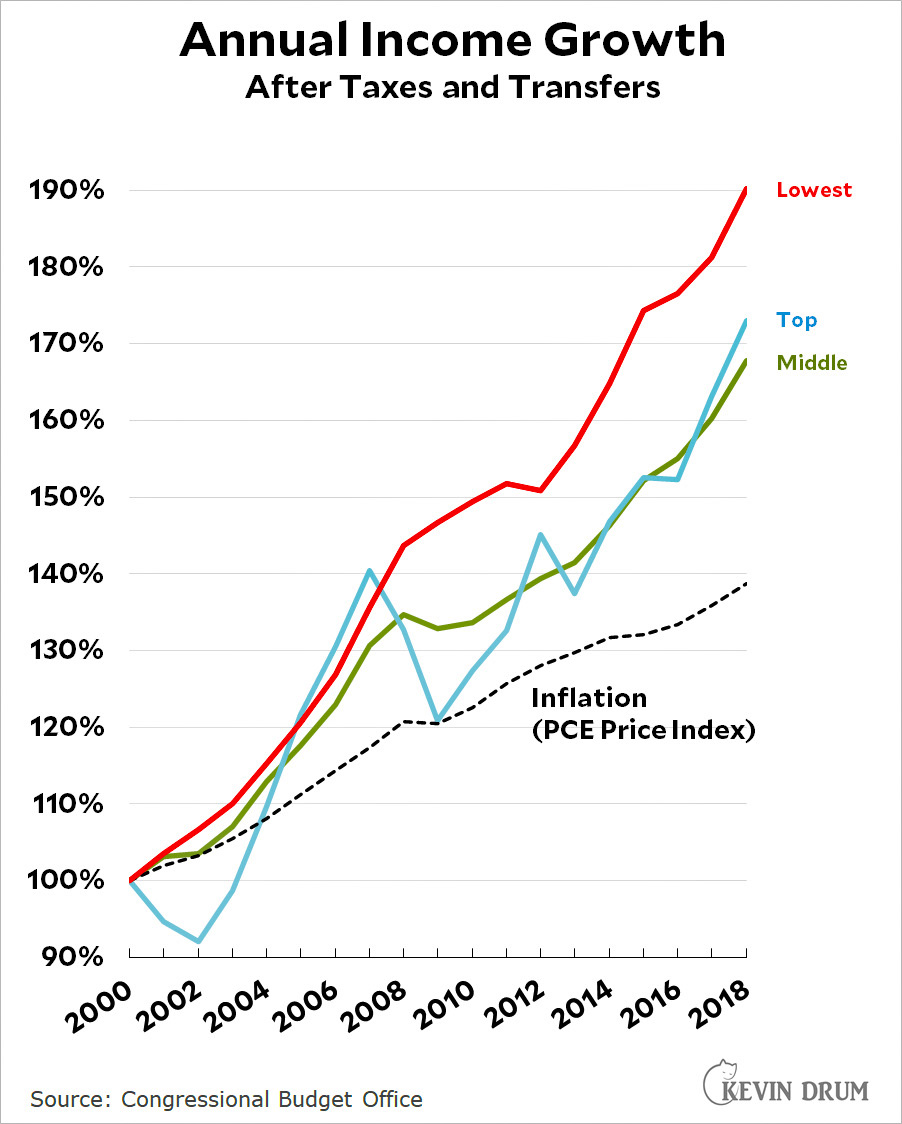 Income is up for everyone: men, women, Black, white, Hispanic, rich, poor, and middle class. Data from the CBO
Income is up for everyone: men, women, Black, white, Hispanic, rich, poor, and middle class. Data from the CBO 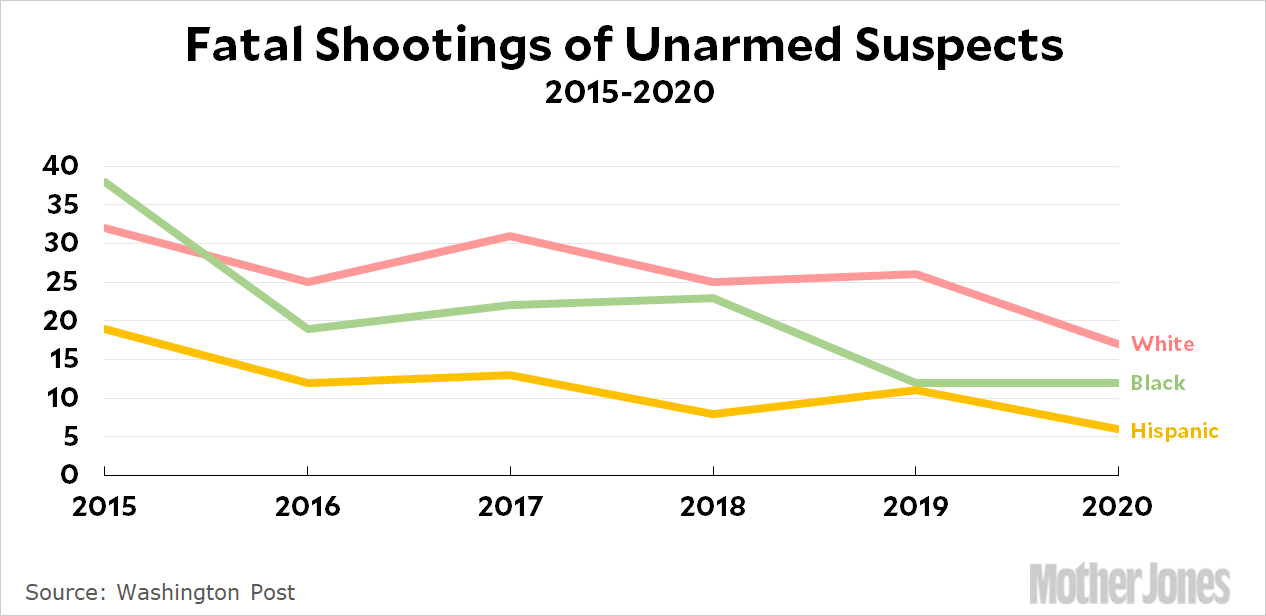 The spiraling cost of medical care has been brought under control. Over the past 20 years, medical inflation has been only slightly higher than overall inflation.
The spiraling cost of medical care has been brought under control. Over the past 20 years, medical inflation has been only slightly higher than overall inflation.
